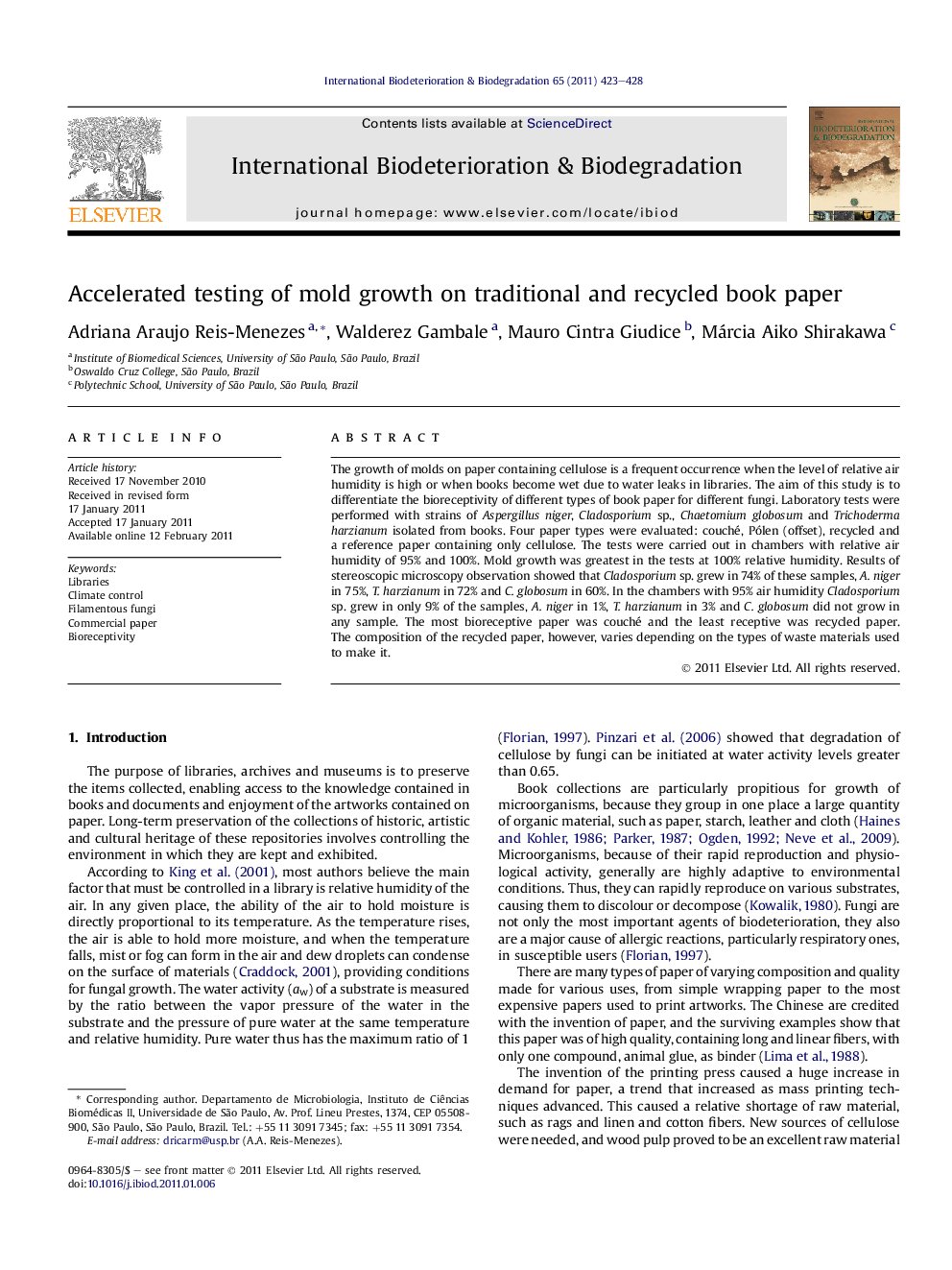| Article ID | Journal | Published Year | Pages | File Type |
|---|---|---|---|---|
| 4365485 | International Biodeterioration & Biodegradation | 2011 | 6 Pages |
The growth of molds on paper containing cellulose is a frequent occurrence when the level of relative air humidity is high or when books become wet due to water leaks in libraries. The aim of this study is to differentiate the bioreceptivity of different types of book paper for different fungi. Laboratory tests were performed with strains of Aspergillus niger, Cladosporium sp., Chaetomium globosum and Trichoderma harzianum isolated from books. Four paper types were evaluated: couché, Pólen (offset), recycled and a reference paper containing only cellulose. The tests were carried out in chambers with relative air humidity of 95% and 100%. Mold growth was greatest in the tests at 100% relative humidity. Results of stereoscopic microscopy observation showed that Cladosporium sp. grew in 74% of these samples, A. niger in 75%, T. harzianum in 72% and C. globosum in 60%. In the chambers with 95% air humidity Cladosporium sp. grew in only 9% of the samples, A. niger in 1%, T. harzianum in 3% and C. globosum did not grow in any sample. The most bioreceptive paper was couché and the least receptive was recycled paper. The composition of the recycled paper, however, varies depending on the types of waste materials used to make it.
